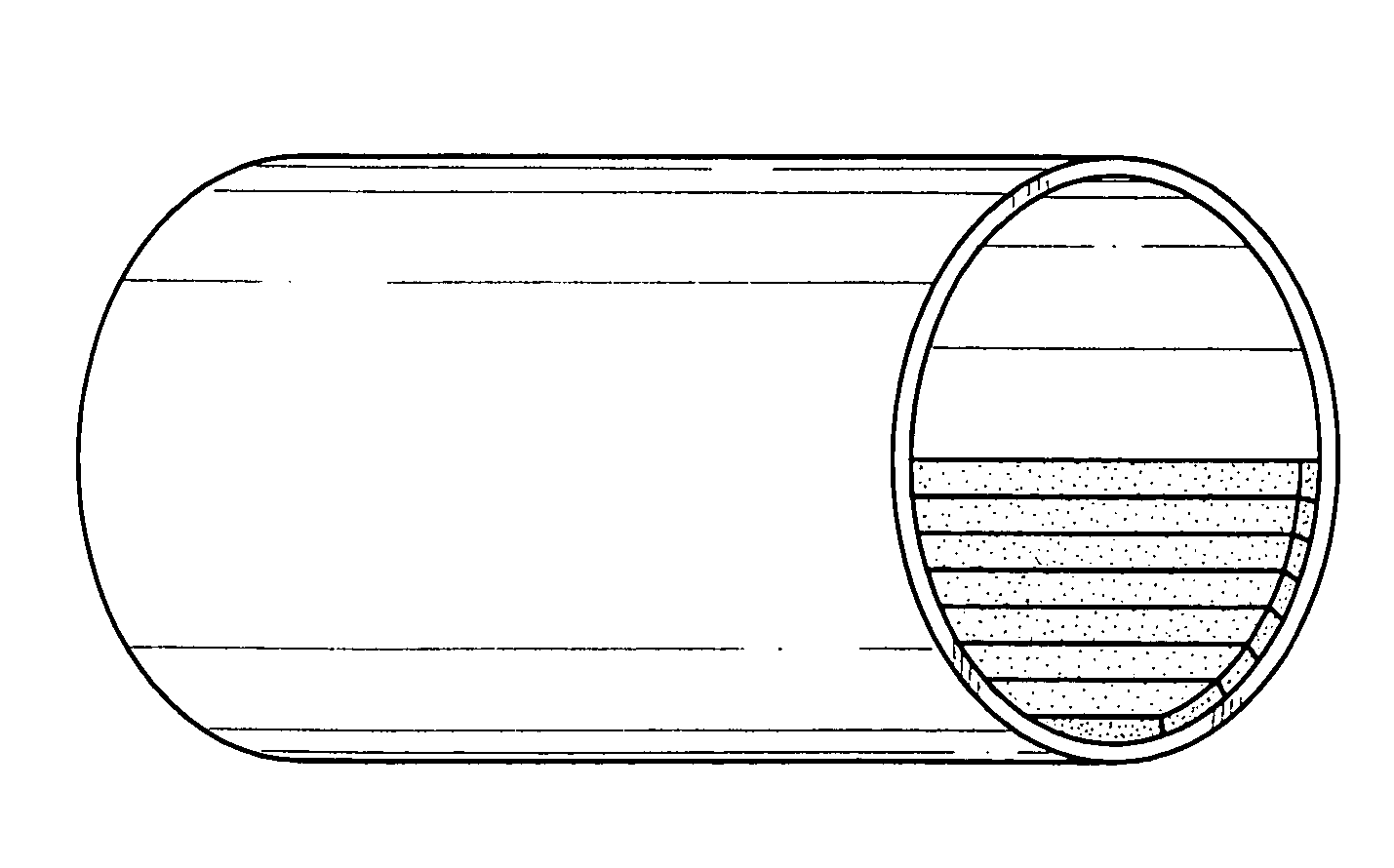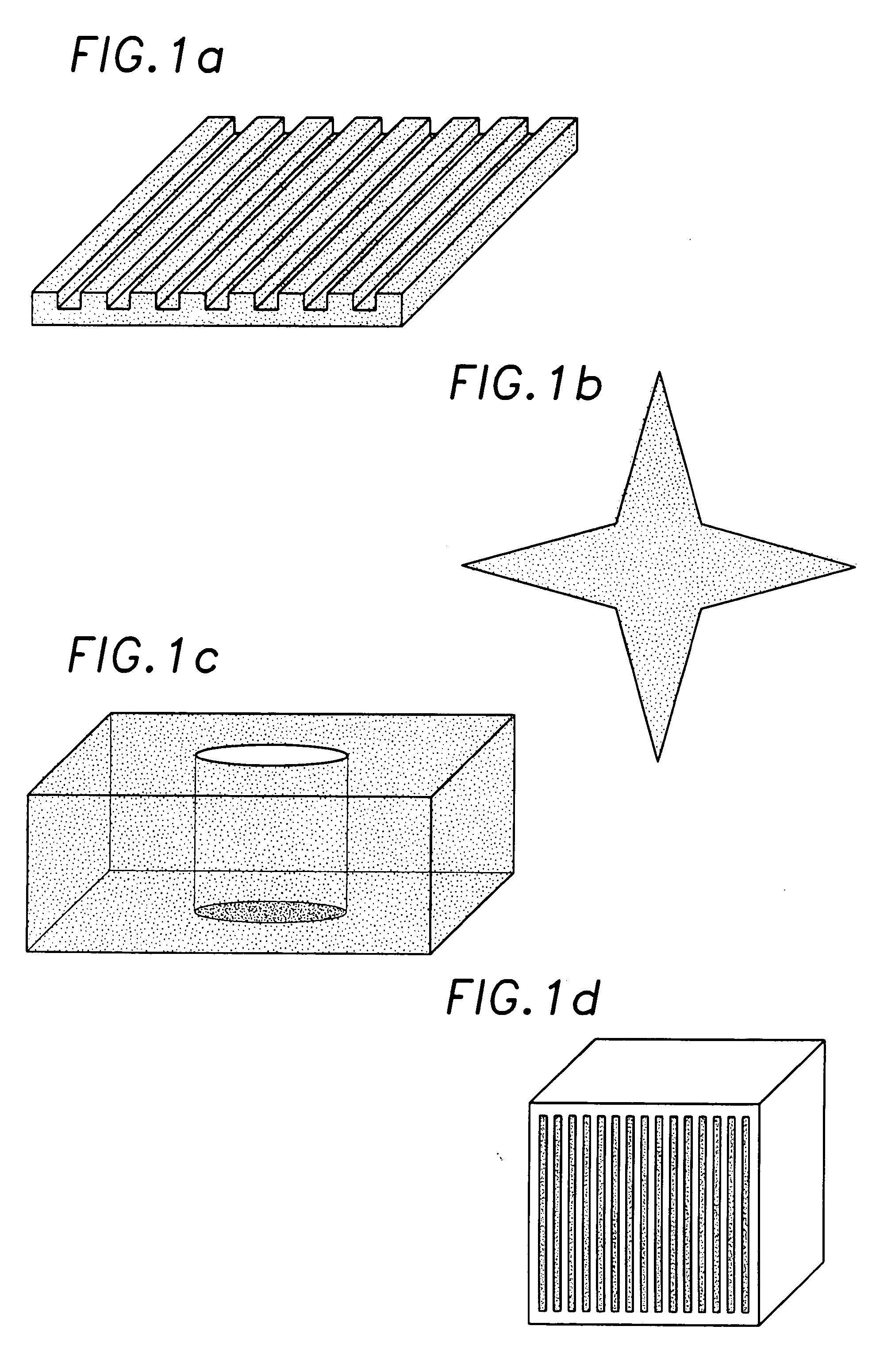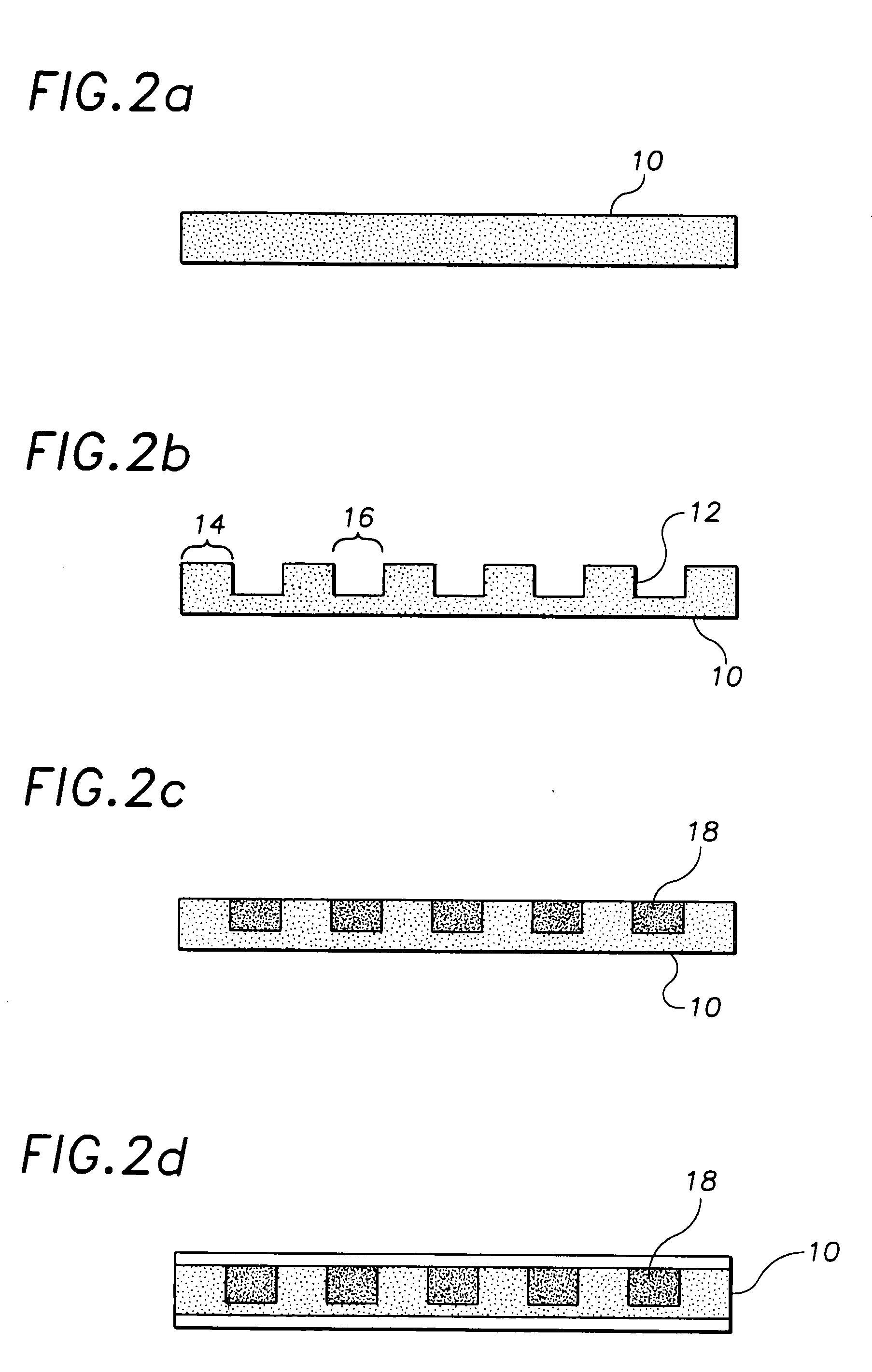Laser machining of electroactive ceramics
a technology of electroactive ceramics and laser machining, which is applied in piezoelectric/electrostrictive/magnetostrictive devices, piezoelectric/electrostriction/magnetostriction machines, electrical equipment, etc., can solve the problems of brittle ceramic materials, difficult and costly arbitrary shape formation, etc., and achieves cost-effectiveness and greater bending flexibility.
- Summary
- Abstract
- Description
- Claims
- Application Information
AI Technical Summary
Benefits of technology
Problems solved by technology
Method used
Image
Examples
examples
[0031] The LBM technique has been successfully applied to a planar electroceramic wafer. The material was a Lead Zirconate Titanate (PZT-5A) which was initially electroded and poled through the thickness, as received from the manufacturer. A number of parallel grooves were machined into one surface of a 3 inch square wafer which was 0.005 inches thick. The grooves were approximately 0.005 inches wide and were spaced evenly approximately 0.020 inches apart. Beam width was 0.004 inches; slightly more material was removed because of heat transfer in the ceramic. Actuation testing of the test article after machining showed no degradation in induced free strain capability or polarization. In addition, an in-plane anisotropy was measured such that lower strain levels were recorded transverse to the axis of the grooves and greater flexibility was also observed, allowing the wafer to be used, for example, on the surface of a cylinder, as shown in FIGS. 3a-3c. The results indicate that the c...
PUM
| Property | Measurement | Unit |
|---|---|---|
| thick | aaaaa | aaaaa |
| width | aaaaa | aaaaa |
| radius of curvature | aaaaa | aaaaa |
Abstract
Description
Claims
Application Information
 Login to View More
Login to View More - R&D
- Intellectual Property
- Life Sciences
- Materials
- Tech Scout
- Unparalleled Data Quality
- Higher Quality Content
- 60% Fewer Hallucinations
Browse by: Latest US Patents, China's latest patents, Technical Efficacy Thesaurus, Application Domain, Technology Topic, Popular Technical Reports.
© 2025 PatSnap. All rights reserved.Legal|Privacy policy|Modern Slavery Act Transparency Statement|Sitemap|About US| Contact US: help@patsnap.com



